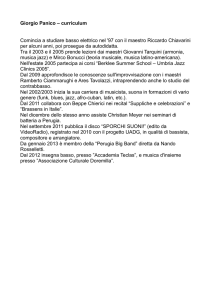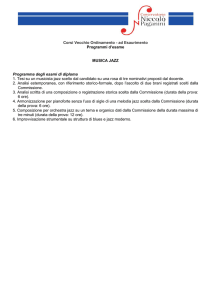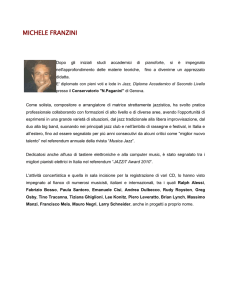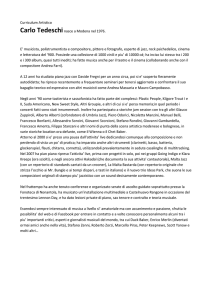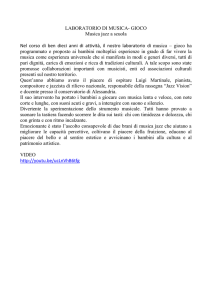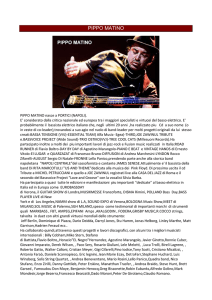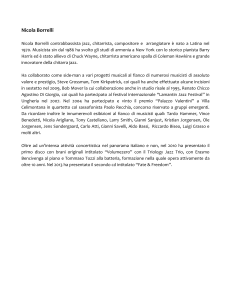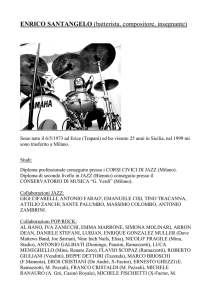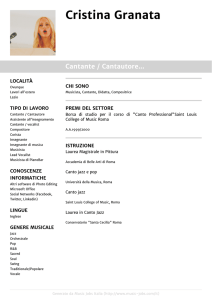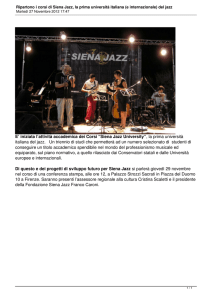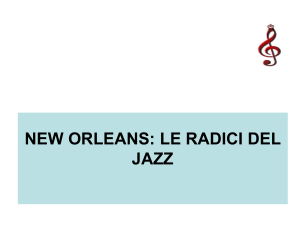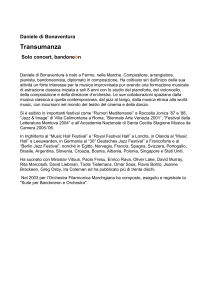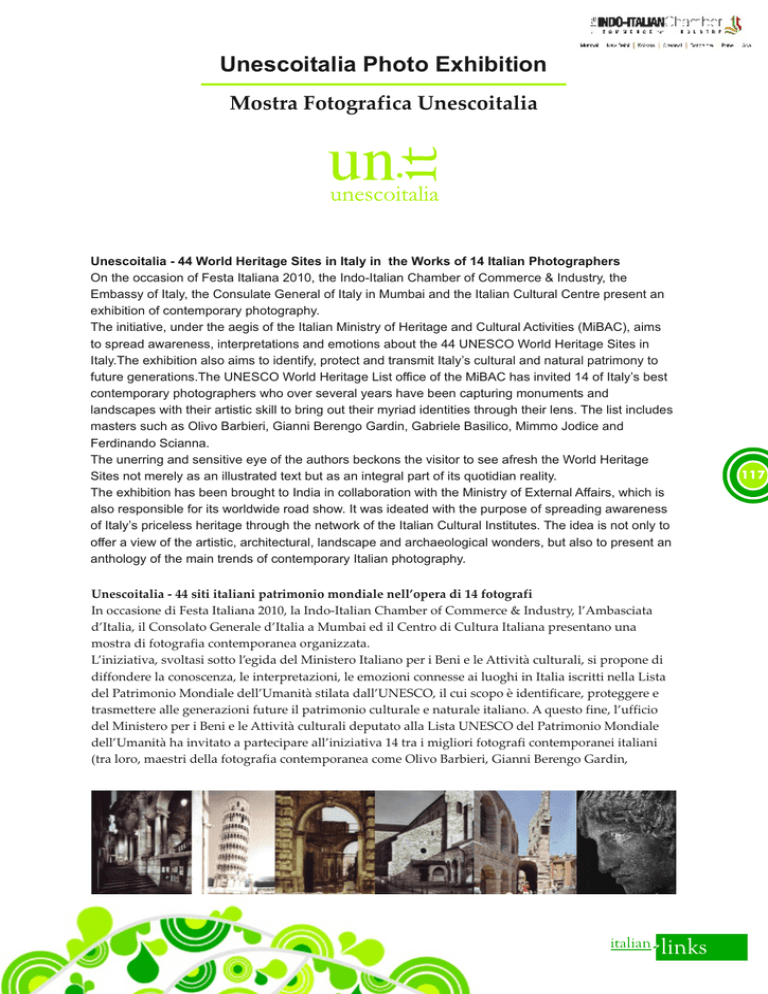
Unescoitalia Photo Exhibition
Mostra Fotografica Unescoitalia
Unescoitalia - 44 World Heritage Sites in Italy in the Works of 14 Italian Photographers
On the occasion of Festa Italiana 2010, the Indo-Italian Chamber of Commerce & Industry, the
Embassy of Italy, the Consulate General of Italy in Mumbai and the Italian Cultural Centre present an
exhibition of contemporary photography.
The initiative, under the aegis of the Italian Ministry of Heritage and Cultural Activities (MiBAC), aims
to spread awareness, interpretations and emotions about the 44 UNESCO World Heritage Sites in
Italy.The exhibition also aims to identify, protect and transmit Italy’s cultural and natural patrimony to
future generations.The UNESCO World Heritage List office of the MiBAC has invited 14 of Italy’s best
contemporary photographers who over several years have been capturing monuments and
landscapes with their artistic skill to bring out their myriad identities through their lens. The list includes
masters such as Olivo Barbieri, Gianni Berengo Gardin, Gabriele Basilico, Mimmo Jodice and
Ferdinando Scianna.
The unerring and sensitive eye of the authors beckons the visitor to see afresh the World Heritage
Sites not merely as an illustrated text but as an integral part of its quotidian reality.
The exhibition has been brought to India in collaboration with the Ministry of External Affairs, which is
also responsible for its worldwide road show. It was ideated with the purpose of spreading awareness
of Italy’s priceless heritage through the network of the Italian Cultural Institutes. The idea is not only to
offer a view of the artistic, architectural, landscape and archaeological wonders, but also to present an
anthology of the main trends of contemporary Italian photography.
Unescoitalia - 44 siti italiani patrimonio mondiale nell’opera di 14 fotografi
In occasione di Festa Italiana 2010, la Indo-Italian Chamber of Commerce & Industry, l’Ambasciata
d’Italia, il Consolato Generale d’Italia a Mumbai ed il Centro di Cultura Italiana presentano una
mostra di fotografia contemporanea organizzata.
L’iniziativa, svoltasi sotto l’egida del Ministero Italiano per i Beni e le Attività culturali, si propone di
diffondere la conoscenza, le interpretazioni, le emozioni connesse ai luoghi in Italia iscritti nella Lista
del Patrimonio Mondiale dell’Umanità stilata dall’UNESCO, il cui scopo è identificare, proteggere e
trasmettere alle generazioni future il patrimonio culturale e naturale italiano. A questo fine, l’ufficio
del Ministero per i Beni e le Attività culturali deputato alla Lista UNESCO del Patrimonio Mondiale
dell’Umanità ha invitato a partecipare all’iniziativa 14 tra i migliori fotografi contemporanei italiani
(tra loro, maestri della fotografia contemporanea come Olivo Barbieri, Gianni Berengo Gardin,
italian
links
117
118
italian
links
Festa Italiana 8th edition
Gabriele Basilico, Mimmo Jodice e Ferdinando Scianna), che da anni immortalano la multiforme
identità dei paesaggi italiani attraverso i loro scatti. Lo sguardo sensibile e preciso degli autori invita il
visitatore a guardare i luoghi patrimonio mondiale dell’umanità con occhi nuovi ed a vederli non
come meri testi illustrati, ma come parte integrante della loro realtà quotidiana. La mostra è stata
portata in India in collaborazione col Ministero degli Affari Esteri, che ha anche promosso il tour
internazionale della mostra. La collezione è stata ideata allo scopo di diffondere il nostro patrimonio
storico e culturale unico al mondo attraverso la rete degli Istituti Italiani di Cultura. L’iniziativa, oltre
ad offrire una panoramica delle meraviglie artistiche, architettoniche, naturali ed archeologiche
dell’Italia, si propone di presentare un’antologia delle principali tendenze della fotografia italiana
contemporanea.
Previous page: Basilica Palladiana, corner view/vista d’angolo. Photo by, Luca Campigotto
Below: Pompei, fresco detail/ particolare di affresco. Photo by, Mimmo Jodice
119
italian
links
Jazz and Classical Music at
Festa Italiana 2010
Jazz e Musica Classica a
Festa Italiana 2010
I
t is with great pleasure that this year, Festa Italiana 2010 features, for its musical events, two of the
best representatives of Italian music worldwide. The first artist, Enrico Rava, is undoubtedly the
world’s most renowned Italian jazz musician. For the first time in India, his Enrico Rava New Quintet
featuring Gianluca Petrella will kick off an astonishing evening of jazz: melodious, intense and at the
same time original and amazing. Dance,Rhythm Celebration… Aria Italiana is the title of the eclectic
programme to be presented by maestro Paolo Vergari, pre-eminent pianist and composer. Maestro
Vergari will present a unique programme, beginning with a Bach overture and moving through
Respighi, Verdi, Liszt, Tosi, to conclude with a rearrangement for piano of the track “È Festa”
composed by the more contemporary Italian band Premiata Forneria Marconi. A one-of-a-kind musical
programme for Festa Italiana 2010, the union of two artists, who are spreading the name of Italian
musical artistry worldwide with elegance and expertise.
.
È con grande piacere che quest’anno Festa Italiana coinvolge per i suoi eventi musicali, due tra i
migliori rappresentati della musica italiana nel mondo. Il primo artista, Enrico Rava, è indubbiamente
il jazzista italiano più conosciuto ed apprezzato a livello internazionale. Per la prima volta in India, il
suo Enrico Rava New Quintet featuring Gianluca Petrella, darà vita ad una sorprendente serata di jazz:
melodico, intenso ed allo stesso tempo originale e sorprendente. La Danza, l’Aria...la Festa, è invece il
titolo dell’eclettico programma che ci propone il Maestro Paolo Vergari, pianista e compositore
d’eccellenza. Il Maestro Vergari presenterà un programma unico, che inizierà con un overture di Bach,
seguita da brani di Respighi, Verdi, Listz e Tosi, per concludersi con un riarrangiamento per
pianoforte del brano “È Festa” della più contemporanea Premiata Forneria Marconi. Un programma
musicale d’eccezione per questa Festa Italiana 2010, il connubio di due artisti che, con eleganza e
competenza, diffondono nel mondo il nome della maestria musicale italiana.
120
italian
links
Festa Italiana 8th edition
Enrico Rava New Quintet featuring Gianluca Petrella
The Enrico Rava New Quintet includes several generations of musicians, each of whom bring strong
personality and solo voices to the table. Since the beginning of his career as a leader, Rava has used
a technique favored by many of the greatest jazz artists: periodically inserting young musicians, new
talents in his groups, which tend to bring new ideas to the group and give it a fresher sound, respectful
of tradition, but open to new possibilities and transformations. A group composed of such richly varied
and original soloists, as the Enrico Rava New Quintet, requires a decisive esthetic direction to permit
creative dialogue between the musicians; Rava's clear authority as leader stems from his ability to
draw out the best from his sidemen, allowing them to reveal their abundant originality within the
expressive world of his original compositions. The result is a multi-faceted mosaic of musical
expression in constant flux.
L’Enrico Rava New Quintet include diverse generazioni di musicisti, ognuna delle quali porta una nota
personale al gruppo. Fin dagli inizi della sua carriera Rava ha utilizzato una delle tecniche preferite da
molti dei più grandi jazzisti, ossia quella di includere periodicamente nelle sue formazioni giovani
musicisti e nuovi talenti, rispettando la tradizione musicale, ma allo stesso tempo esponendo il gruppo
a idee, sonorità e trasformazioni sempre nuove.
Un gruppo variegato e composto da solisti d’eccezione come l’Enrico Rava New Quintet, necessita di
una direzione estetica decisa, che porti a costruire un dialogo musicale creativo tra i musicisti.
L’autorità di Rava come leader, nasce dalla sua capacità di fare emergere il meglio da ogni membro del
gruppo. Ognuno è libero di esprimere la propria originalità musicale all’interno del mondo espressivo
delle composizioni di Rava. Il risultato è uno straordinario mosaico musicale in costante divenire.
The Best of Rava
Il meglio di Rava
Ÿ1978, Quartet
Ÿ1993, Rava l’opera Va
Ÿ2004, Easy Living
Ÿ2005, Tati
Ÿ2007, The Words and the Days
Ÿ2009, New York Days
italian
links
121
Biographies/Biografie
122
Enrico Rava, trumpeter and composer, is
undoubtedly the most well-known Italian jazz
musician on a global level. His style is immediately
recognizable, his lyrical sound constantly sustained
by an astonishing freshness of ideas which are
revealed in all of his musical endeavours.
In addition to his work as leader, Rava has been an
important collaborator of musicians like Stefano
Bollani, Philip Catherine and Lee Konitz, just to
name a few.
He has toured in the USA, Japan, Canada, Europe,
Brazil, Argentina and Uruguay, with appearances at
important festivals all over the world. He has
repeatedly been named “Best Musician” in the yearly
referendum conducted by “Musica Jazz” (Italy's
premier Jazz periodical), as well as winning “Best
Group” and “Best Record”. Named “Knight of Arts
and Letters” by the French Ministry of Culture, in
2002 Rava was also recipient of the prestigious
“Jazzpar Prize” in Copenhagen. In the last three
th
years, Rava appeared as 4 place in the Trumpet
conducted by the
dums
n
refere
the
in
category
American magazine “Down Beat”.
Enrico Rava, trombettista e compositore, è sicuramente il
jazzista italiano più conosciuto ed apprezzato a livello
internazionale. La sua poetica immediatamente
riconoscibile, la sua sonorità lirica e struggente sempre
sorretta da una stupefacente freschezza d’ispirazione,
risaltano fortemente in tutte le sue avventure musicali.
Oltre ai suoi capolavori da solista, Rava ha collaborato con
musicisti italiani ed internazionali come Stefano Bollani,
Philip Catherine e Lee Konitz.
Ha effettuato tour e concerti in USA, Giappone, Canada,
Europa, Brasile, Argentina, Uruguay partecipando a
importanti Festival in tutto il mondo. È stato più volte
votato miglior musicista nella classifica annuale della rivista
"Musica Jazz", risultando vincitore anche nelle categorie
"Miglior Gruppo" e "Miglior Disco Italiano”.
Nominato “Cavaliere delle Arti e delle Lettere” dal Ministro
della Cultura Francese, nel 2002 ha anche ricevuto il
prestigioso “Jazzpar Prize” a Copenhagen.
Negli ultimi tre anni è comparso al 4a posto nella classifica
della rivista americana Down Beat, nella sezione riservata ai
trombettisti.
Gianluca Petrella is considered one of the world’s
finest jazz trombonists. He played with musicians
such as Steve Bernstein and Grey Osby, and the
Italian Roberto Gatto, Antonello Salis and Gianluigi
Trovesi just to name few. He has appeared in many
of the most important international festivals, from
Montreal to the Umbria Jazz.
Gianluca Petrella è considerato uno dei più raffinati
trombonisti al mondo. Ha suonato con musicisti della
levatura di Steve Bernstein e Grey Osby, e con gli italiani
Roberto Gatto, Antonello Salis e Gianluigi Trovesi, per
citarne alcuni. Ha partecipato a molti dei principali festival
internazionali di musica, dal Festival di Montreal all’Umbria
Jazz.
Gabriele Evangelista is a very young double bass
player scouted by Rava during his Jazz workshops
in Siena. Gabriele is extremely talented and thank to
his special skills, high precision combined with great
creativity, has been requested by many Italian as
well as foreigners musicians like Roberto Gatto, Kurt
Rosenwinkel, Alessandro Lanzoni and Danilo Rea
just to mention few of them.
Fabrizio Sferra is the founder of the well-known and
widely acclaimed trio “Doctor 3”. His experience in
widely varying contexts has helped him develop an
extremely refined dynamic and rhythmic control, and
thanks to his artistic sensibility and versatility, he has
come to be considered a true original of European
drumming.
Giovanni Guidi is a shining example of Italy's latest
generation of jazz talent, is named “Best New Talent”
by Musica Jazz in their 2007 poll “Top Jazz”. He has
released several critically acclaimed albums and has
performed in many important festivals, both within
Italy and internationally.
italian
links
Festa Italiana 8th edition
Gabriele Evangelista è un giovanissimo contrabbassista
scoperto da Rava ai seminari jazz di Siena. Sta bruciando le
tappe a velocità incredibile grazie alle sue straordinarie doti
artistiche: precisione unita ad una creatività sfrenata. È già
richiestissimo da musicisti quali Roberto Gatto, Kurt
Rosenwinkel, Alessandro Lanzoni, Danilo Rea ecc.
Fabrizio Sferra è il fondatore del famoso ed acclamato trio
“Doctor 3”. La sua esperienza in contesti sempre diversi l’ha
aiutato a sviluppare un controllo dinamico e ritmico
estremamente raffinato. Inoltre grazie alla sua sensibilità
artistica e versatilità, è considerato uno dei più originali
batteristi in europa.
Giovanni Guidi è un esempio brillante dell’ultima
generazione di talenti del jazz italiano. Pianista, è stato
nominato“Miglior Nuovo Talento” dalla rivista Musica Jazz
nella selezione del 2007 “Top Jazz”. Ha realizzato diversi
album apprezzati dalla critica e partecipato a molti festival
importanti, sia in Italia che all’estero.
Playing music for music’s sake - An interview with Enrico Rava
1. Looking at your biography, it is incredible
to read about all the places in the world
where you have played. Is this your first
time in India?
I toured India about 20 years ago and it was an
extraordinary experience. The people, the
cities, the food... so much so that I wanted to
come back here and stay for a year.
2. When one thinks of jazz, one thinks of the
Afro-American communities of the American
South. In a short while, you will play in
Mumbai, far away from those origins. How
can one introduce jazz into the Indian
musical culture?
Jazz is a universal music form, which is sinking
its roots in Africa and in Europe. As regards
blues, from which jazz originated, it has some
qualities that are found in popular music
throughout the world, so...
3. According to you, does a jazz culture
exist in Asian countries today?
The jazz audience is similar throughout the
world since it is made up of people who love the
same thing and share its codes. There are
some cities that are a little more snobbish, like
New York, Paris and Amsterdam, where the
audience is a little more difficult.
4. Over the years, many Western musicians
have come to India to look for different
sounds and new sources of inspiration. To
what extent can jazz imbibe Asian musical
influences?
I do not believe much in unnatural fusions that
are generally devised artificially. In general,
they tend to utilise the most superficial aspects
of the various music forms. I do not particularly
like so-called ‘world music’.
123
5. Indian classical music is closely tied to
religion and to a deep spirituality. What
about jazz?
It is certainly not tied to religion. In some cases
(for example Coltrane), it is tied to spirituality. In
general, one plays music for music.
6.What happens to you and to your music
when you travel and come across diverse
italian
links
musical cultures?
Whatever happens, if it happens, does so at an
unconscious level and never directly.
7. What position does music hold today, in
particular your jazz?
My music has the sole aim of making my life
more enjoyable and, as far as possible, the
lives of others.
8. How has jazz changed compared to the
golden years that you experienced together
with great names such as Miles Davis,
Leandro Gato Barbieri and Steve Lacy?
Jazz has lost its creators and its greatest
masters – Armstrong, Ellington, Parker,
Gillespie, Miles, Monk and Billie Holiday – and
nobody has filled the void left by them; but
there are many beautiful and many interesting
things even today.
124
9. One of your hallmarks is the search for
new talents. What is the current situation
with regard to young jazz musicians?
In Italy, the situation is excellent. There are
young and sometimes very young exceptional
musicians.
10. In your long career, you have had a
chance to play in different formations. What
can we expect for the Mumbai
performance?
I always try to give my utmost and play as if it
were for the last time. This is the great lesson
taught by those who invented this music form.
La musica per la musica- Intervista
con Enrico Rava
1. Scorrendo la sua biografia, stupisce leggere
di tutti i luoghi del mondo dove lei ha
suonato. È questa la sua prima volta in India?
Ho fatto un tour una ventina d’anni fa, ed è
stata un’esperienza eccezionale. La gente, le
città, il cibo... tant’è che volevo tornarci per
fermarmi un annetto.
2. Quando si pensa al jazz, si pensa alle
italian
links
Festa Italiana 8th edition
comunità afro-americane del sud degli USA.
Tra poco lei suonerà a Mumbai, agli antipodi
di quelle origini. Come si può inserire il jazz
all’interno della cultura musicale Indiana?
Il jazz è una musica universale, che affonda le
proprie radici nell’Africa e nell’Europa. In
quanto al blues, che è all’origine del jazz, ha
delle caratteristiche che si ritrovano nelle
musiche popolari di tutto il mondo, quindi...
3. Secondo lei ad oggi esiste nei paesi asiatici
una cultura jazz?
Il pubblico del jazz è simile in tutto il mondo
trattandosi di persone che amano la stessa cosa
e ne condividono i codici. Ci sono alcune città
un po’ più snob, come New York, Parigi e
Amsterdam, dove il pubblico è un po’ più
difficile.
4.Nel tempo sono stati molti i musicisti
occidentali venuti in India a cercare sonorità
diverse e fonti di ispirazioni nuove. Quanto il
jazz potrebbe accogliere influenze musicali
asiatiche?
Non credo molto nelle fusioni innaturali,
generalmente pensate a tavolino. In genere
tendono ad utilizzare la parte più superficiale
delle varie musiche. Non amo particolarmente
la così detta “World Music”.
5. La musica classica indiana è strettamente
legata alla religione e ad una forte spiritualità.
Ed il jazz?
Certamente non è legato alla religione. In alcuni
casi (ad esempio Coltrane) è legato alla
spiritualità. In genere si suona la musica per la
musica.
6. Cosa accade a lei e alla sua musica quando
viaggiate ed incontrate culture musicali
diverse?
Tutto quello che accade, se accade, accade a
livello inconscio e mai per vie dirette.
7. Che posizione riveste la musica oggi, ed in
particolare il suo jazz?
La mia musica ha come unico obiettivo quello
di rendere più piacevole la mia vita e nel limite
del possibile quella degli altri.
8. Com’è cambiato il jazz rispetto agli anni
d’oro che lei ha vissuto insieme a grandi nomi
quali Miles Davids, Leandro Gato Barbieri o
Steve Lacy?
Il jazz ha perduto i suoi creatori ed i suoi più
grandi maestri: Armstrong, Ellington, Parker,
Gillespie, Miles, Monk, Billie Holiday e nessuno
ne ha riempito il vuoto. Comunque ci sono cose
molto belle e molto interessanti anche oggi.
9. Una sua caratteristica è la ricerca di nuovi
talenti. Qual è la situazione attuale del
panorama giovanile della musica jazz?
In Italia la situazione è ottima, ci sono giovani e
a volte giovanissimi musicisti eccezionali.
10. Nella sua lunga carriera ha avuto modo di
Suonare in diverse formazioni. Cosa
dobbiamo aspettarci per la performance di
Mumbai?
Io cerco sempre di dare il massimo e di suonare
come se fosse l’ultima volta. È la grande lezione
di quelli che hanno inventato questa musica.
“Dance, Rhythm, Celebration...Aria Italiana”
Music will save the world - An interview with Paolo Vergari
1. Your biography reveals a fascinating
musical journey, full of diverse experiences
and encounters. Which among them left an
indelible mark on your way of composing
and playing?
It is normal in a musician’s life to meet many
people, many of whom were for me very
important.
There was my first teacher, Carlo Marcucci, a
jazz trumpet player. He made me love music
and instinctively ‘taught’ me improvisation. Then
there was my ‘classmate’, Alessandro Cappella,
who is also a pianist. With him, I made my most
important existential discoveries about music,
like revealing and living music in one word, like
‘infinite expansion of the soul’. There are many
other teachers, the list is long. Whenever I
listen to a concert, it is an experience of
profound acquaintance!
2. You have played in many of the most
important theatres in the world. What
emotions does one feel while playing at the
United Nations Building in New York or at
the Nervi Hall in the Vatican?
When I play I try, first of all, to find
concentration. It is a simple and complex
condition, and many things contribute towards
ensuring that perfect concentration is achieved.
On this depends the relationship that is created
with the audience, which is extremely delicate.
The relationship with the audience, whichever
stage one is on, is disarming. It lays bare what
you are at that moment and what you are able
to recreate at that moment, in that hall, with that
audience. It is beautiful and mysteriously
touching.
3. What is the difference between
performing solo and in an ensemble?
Whether you are playing solo or in a group, the
feeling is still what I spoke about earlier: of
being laid bare. If you are together with another
musician or several musicians, what changes is
that, what ‘musically’ the musicians ‘are’
together, is laid bare. Personally, when I
happen to find true harmony and oneness with
another musician, it proves to be an exhilarating
and rapturous experience. It happened to me,
for example, last year when we improvised a
piece during a concert. The members consisted
of a Jewish oboist-singer, a Jewish mandolin
italian
links
125
player, a Palestinian oud (sort of Arab lute)
player, an Italian cellist and myself, the pianist.
Absolute differences, diverse cultures, a piece
to be created right then, as is typical of
improvisation. In spite of this, a great listening
atmosphere was immediately created among
us, rather, a million-watt ‘current of listening’! It
is this profound mutual listening that made the
music flow!
4. When one speaks of classical music, one
usually refers to an elite audience,
considered connoisseurs of the genre and
the only ones who can understand it. What
is your opinion?
Unfortunately, it is often so, but not always. I
never think of and I do not believe remarks like:
"Ah, once upon a time it was different! There
was more culture..." etc. I think that the value of
the music fosters the music itself. The elite die,
the great music of art never dies! Even if visited
by ‘barbarians’, it receives new life and always
‘says’ something relevant. Because music is
with the life of the individual. When an individual
encounters music, which is a profound
experience of the soul and not a musical genre,
he receives a great gift for which he will be
forever grateful and will always know what
music reveals infinitely.
126
5. Among the various countries that have
had the pleasure of hearing you, China
surely stands out. What can you tell us of
this experience? How can Western classical
music be interwoven with Chinese music?
It is difficult to describe the experience in China
in a few lines. To meet with the Chinese culture
can be an important ‘event’ in one’s life.
Confining myself to music, I can say that after
five years of concerts (even three times a year),
I have noted a development both in the quality
italian
links
Festa Italiana 8th edition
of listening and in the organisation of music.
For example, now there are beautiful, efficient,
modern and new theatres. After the tour to
China last summer, I also sensed a special
feeling being created between myself and the
audience at the end of the concert, a quality of
relationship that I felt so intensely for the first
time in that country. With China, one can never
say, now I have understood! Hence my attitude
is one of continuous listening and discovery.
What we can give as a Western culture (if such
a culture still exists!) is perhaps the depth of the
musical language. Often, also because of the
young Chinese musicians, the image that is
carried from there is that of the Music-ShowBusiness, and that of the Music-Circus: “Let’s
see how many notes he can play in one
second?!”
But I had the pleasure of meeting musicians
and young composers who are going against
the trend and bringing to music all the vivacity
of a world that ‘is running’, even artistically.
They are still in a minority, but at least they give
hope. Culture and beauty will play a very
important role in the dialogue and in the
relationship between these worlds in the
immediate future.
6. Has meeting with different peoples and
musical cultures influenced your music in
any way over time?
It always influences you. My perception of
music has changed a great deal by
experiencing diverse cultures. For one thing,
there is an expansion of one’s ‘ear’ and, as a
result, of the significance of music in people’s
lives. The direction that interests me is what
music is becoming: extremely important and
crucial in the quality of life of an individual as
well as of a society.
7. After the US, France, Romania and China,
in a short while we will get to hear you in
Mumbai. Is it your first time in India? What
are you expecting from this country?
It is my first time in India. It is a great country,
with a thousand-year-old culture. As it is with
China, here one is before ‘8,000 metres’, hence
before the feeling of being breathless. I have
great curiosity and desire to see many of the
things I have imagined, read in books and
heard in stories. All my senses will be at their
peak. And I am expecting great joy.
8. Indian classical music has an almost
inescapable connection with religion and
mythology. How would you compare it with
Western classical music?
In decades past, Western culture, with its
musicians and philosophers, has looked with
great interest at Indian culture. Perhaps
Western music was searching for what it had
lost, that is the strong connection with
spirituality in general, which signifies religion,
myth, mystery, and which was also present at
the beginning of its journey (Western music is
based on Gregorian chants) and in some ways
till the first half of the 20th century. These ‘trips’
to an extremely distant culture were demanding
50-60 years ago (think of Messiaen, Cage,
Riley), they had some effect and influenced the
language of music, producing important things,
but certainly not with mass appeal.
9. The programme that you will tackle in the
Mumbai performance is particularly eclectic,
opening with Bach and concluding with a
track of the contemporary Italian band
Premiata Forneria Marconi. What are the
reasons for such a peculiar choice?
The eclectic and historically wide-ranging
programme expresses my musical identity. I like
to connect the most disparate varieties to find
their tenuous common threads.
10. You have a classical training, how did
you tackle the rearrangement for piano of
non-classical tracks?
My training, in fact, is not just classical. Hence, I
felt very good. Honestly, I also believe that a
complete musical training, common to many
musicians, cannot be only academic. There are
great pianists who perhaps have never known
Bach and have surely never studied him! Glenn
Gould said, with a touch of envy, about a jazz
pianist: “I would love to have a left hand like
his!”
11. In your opinion, what role will classical
music play in the years to come?
It is true that this globalisation is placing us in
lots of dangers and pitfalls, including that of
italian
links
127
translation-reduction and hence a loss of
meaning.
The present-day homo economicus who is
increasingly running out of words, reveals a
poverty. Music could ‘save’ us from this
because it educates us and essentially requires
us to listen and pay attention. The art of music
therefore needs good ‘workers’ to contribute
towards overcoming the many difficulties of our
world. If Bush, Bin Laden and many others had
studied – I don’t know – the oboe (which is
extremely difficult), perhaps they would have
acted differently! Certainly they would have had
less time to do harm!
La Musica salverà il mondo Intervista con Paolo Vergari
128
italian
mentre si suona al palazzo delle Nazioni
Unite a New York o alla Sala Nervi in
Vaticano?
Quando suono cerco di trovare prima di tutto la
concentrazione: è una condizione semplice e
complessa, tante cose contribuiscono a far sì
questo avvenga in modo perfetto. Da questo
poi dipende il rapporto che si crea con
l'audience, che è molto delicato. La relazione
con il pubblico, quando si è su qualsiasi palco, è
disarmante: mette a nudo quello che sei in quel
momento e quello che riesci a ricreare in quel
momento, in quella sala, con quel pubblico; è
bello e misteriosamente emozionante.
1. La sua biografia rivela un affascinante
percorso musicale, ricco di esperienze ed
incontri diversi. Quali tra i tanti sono stati un
segno indelebile nel suo modo di comporre e
suonare?
È normale nella vita di un musicista fare tanti
incontri, molti dei quali per me molto
importanti.
Cito il mio primo Maestro, Carlo Marcucci, un
trombettista di musica jazz. Mi ha fatto
appassionare alla musica e mi ha istintivamente
“insegnato" l'improvvisazione. Poi il mio
compagno di "classe", Alessandro Cappella,
anche lui pianista. Con lui ho fatto le più
importanti scoperte esistenziali della musica,
come lo scoprire e vivere la musica in una
parola, come "dilatazione infinita dell'anima".
Ci sarebbero tanti altri maestri ancora, la lista è
lunga. Ogni volta che ascolto un concerto è un'
esperienza di conoscenza profonda!
3. Qual è la differenza tra l’esibirsi come
solista piuttosto che in un’ensemble?
Che tu stia suonando da solo o in gruppo, la
sensazione rimane quella di cui parlavo prima:
l’essere messo a nudo. Se sei insieme ad uno o
più musicisti, ciò che cambia è che si mette a
nudo quello che "musicalmente" i musicisti
"sono" insieme. Personalmente quando mi è
succeso di trovare sintonia e unità vera con un
altro musicista si è rivelata essere un'esperienza
esaltante ed estasiante. Mi è capitato ad
esempio lo scorso anno quando durante un
concerto abbiamo improvvisato un pezzo.
L'organico era composto da un’oboista-cantante
ebrea, un mandolinista ebreo, un oud (sorta di
liuto arabo) palestinese, un cellista italiano ed io
pianista. Differenze totali, culture diverse, un
pezzo da creare al momento, come è tipico
dell'improvvisazione; ciononostante tra noi si è
immediatamente creato un grandissimo ascolto,
anzi, una "corrente di ascolto" a milioni di
watts! È questo profondo ascolto reciproco che
ha fatto venir fuori la musica!
2. Lei ha suonato in molti dei più importanti
teatri al mondo. Quali emozioni si provano
4. Quando si parla di musica classica, di solito
ci si riferisce solo ad un pubblico d’elite,
links
Festa Italiana 8th edition
considerato cultore del genere ed il solo in
grado di comprendere. Qual è la sua opinione
in merito?
Purtroppo è cosi spesso, ma non sempre. Non
penso mai e non dò credito a discorsi del tipo:
"Eh, una volta sì che era diverso! C'era più
cultura..." ecc. Penso che il valore della musica
promuova la musica stessa, le elite muoiono, la
grande musica d'arte non muore mai! Anche se
visitata dai "barbari", riceve nuova vita e “dice”
sempre qualcosa di attuale. Perché la musica è
con la vita della persona. Quando una persona
incontra la musica, che è un esperienza
profonda dell'anima e non un genere musicale,
riceve un dono grandissimo, ne sarà sempre
grata e non smetterà mai di conoscere quello
che la musica rivela infinitamente.
5. Tra i vari paesi che hanno avuto il piacere di
ascoltarla, sicuramente spicca la Cina. Cosa ci
racconta di questa esperienza? Come la
musica classica occidentale può intrecciarsi
con quella cinese?
È difficile descrivere l’esperienza in Cina in
poche righe. Incontrarsi con la cultura cinese
può essere un “evento” importante nella
propria vita. Per limitarsi alla musica, posso
dire che dopo 5 anni di concerti (anche 3 volte
all’anno) ho notato una crescita sia nella qualità
dell’ascolto che nell’organizzazione della
musica. Ad esempio ci sono adesso teatri
bellissimi, efficienti, moderni, nuovi. Dopo il
tour della scorsa estate in Cina ho anche
percepito che alla fine del concerto si stava
creando tra me e il pubblico un feeling
particolare, una qualità di relazione che sentivo
per la prima volta così intensa in quel Paese.
Con la Cina non si può mai dire, adesso ho
capito! Quindi il mio atteggiamento è di
continuo ascolto e scoperta.
Quello che possiamo dare come cultura
occidentale (se ancora esistiamo!) è forse la
profondità del linguaggio musicale. Spesso,
anche a causa dei giovani musicisti cinesi,
l’immagine che si veicola da quelle parti è
quella del Music-Show-Business. Non solo,
anche quella del Music-Circus: “Vediamo
quante note riesce a suonare in un secondo?!”
Ho avuto comunque il piacere di incontrare
musicisti e giovani compositori che vanno in
controtendenza e portano alla musica tutta la
vivacità di un mondo che “corre”, anche
artisticamente. Sono sempre in minoranza, ma
almeno fanno sperare. La cultura e la bellezza
avranno un ruolo importantissimo nel dialogo e
nel rapporto tra questi mondi nell’immediato
futuro.
129
6. L’incontro con popoli e culture musicali
diverse ha in qualche modo influenzato la sua
musica nel tempo?
Sempre ti influenza. Ho cambiato molto la
percezione della musica conoscendo culture
diverse. Come?! Intanto c’è una dilatazione del
proprio orecchio e poi, di conseguenza, dei
significati della musica nella vita delle persone.
La direzione che mi interessa è quello che la
musica arriva a diventare: importantissima e
determinante nella qualità della vita di una
persona così come di una società.
7. Dopo USA, Francia, Romania e Cina, a
breve la potremo ascoltare a Mumbai. È la sua
prima volta in India? Cosa si aspetta da questo
paese?
È la prima volta in India. È un grande Paese,
con una cultura millenaria; come per la Cina la
sensazione è quella di trovarsi di fronte ad un
“8.000 metri” e quindi di rimanere senza fiato.
Ho grande curiosità e voglia di vedere tante
cose immaginate, lette sui libri e sentite nei
racconti. Avrò tutti i sensi al massimo. E mi
italian
links
aspetto una grande gioia.
8. La musica classica indiana ha un legame
quasi imprescindibile con religione e
mitologia. Qual è secondo lei il confronto con
la musica classica occidentale?
Nei decenni passati la cultura occidentale, con i
suoi musicisti e filosofi, ha guardato con
grandissimo interesse alla cultura indiana.
Forse la musica occidentale cercava quello che
aveva perso, cioè il forte legame con la
spiritualità in generale, che significa religione,
mito, mistero, e che stava anche alle origini del
suo percorso (la musica occidentale ha come
fondamento il canto gregoriano) e che in
qualche maniera è presente fino alla prima
metà del ‘900. Questi “viaggi” dentro una
cultura lontanissima, 50-60 anni fa (pensiamo a
Messiaen, Cage, Riley) erano impegnativi,
facevano un certo effetto e hanno influenzato il
linguaggio musicale producendo risultati
importanti, ma che non sono riusciti a dare
impulso ad un dialogo interculturale e a
raggiungere un vasto pubblico.
130
9. Il programma che affronterà nella
performance di Mumbai è particolarmente
eclettico, aprendosi con Bach e concludendosi
con un brano della Premiata Forneria Marconi.
Da cosa nasce questa scelta così particolare?
Il programma eclettico e di grande respiro
storico esprime la mia identità musicale. Mi
piace accostare le diversità più disparate per
trovarne i sottili fili comuni.
completa, comune a tanti musicisti, non possa
essere solo accademica. Ci sono grandi pianisti
che forse non hanno conosciuto Bach e
sicuramente non lo hanno mai studiato! Glenn
Gould disse, con un pizzico di invidia, di un
pianista jazz: “Vorrei avere la mano sinistra
come la sua!”
11. A suo avviso che ruolo avrà la musica
classica negli anni che verranno, in una realtà
globale in continua evoluzione?
È vero che questa globalizzazione ci pone in un
sacco di rischi e trappole, tra cui quello della
traduzione-riduzione e quindi perdita di
significati.
Il linguaggio stesso dell’homo economicus
contemporaneo sempre più a corto di parole,
esprime una povertà. La musica potrebbe
“salvare” da questo, perché essa ci educa e ci
richiede fondamentalmente ascolto e
attenzione. La musica d’arte quindi ha bisogno
di buoni “operai” per contribuire al
superamento delle tante difficoltà del nostro
mondo. Se Bush, Bin Laden e tanti altri avessero
studiato, che ne so, l’oboe (che è molto difficile),
forse agirebbero diversamente! Di sicuro
avrebbero avuto meno tempo per fare danni!
The Best of Paolo Vergari
Il meglio di Paolo Vergari
Ÿ2001, Perdono
Ÿ2003, 40 Studi di perfezionamento di
10. Lei che ha una formazione classica, come
ha affrontato il riarrangiamento per pianoforte
di brani non classici?
La mia formazione in realtà non è solo classica,
quindi mi sono trovato molto bene. A dir la
verità credo anche che una formazione musicale
italian
links
Festa Italiana 8th edition
Gino Tagliapietra
Ÿ2006, My love to China
Ÿ2007, Concerti per Pianoforte e Orchestra
di Gian Francesco Malipiero
Biography/Biografia
Paolo Vergari studied piano and composition at
the “L. D’Annunzio” conservatory in Pescara
with Giovanna De Fanti, and subsequently with
M. Della Chiesa D’Isasca, E. Hubert,
A.Ciccolini, T. Nikolajewa, E. Murano and A.
Hintchev. His international music career was
launched by success in the Johann Sebastian
Bach competition in Leipzig in 1988.
He has given concerts as a soloist and in
chamber ensembles at major location from the
Teatro La Fenice in Venice to the United
Nations auditorium in New York. He has
performed as soloist with great international
Orchesters, from the Akademische Orchester
Freiburg, to the RAI National Symphony
Orchestra and played under conductors such
as Giorgio Bernasconi and Mirjam Schimdt.
His interest in the masterworks of chamber
music has led to major collaborations with the
“Quartetto Szymanowski”, with violinist
Cristiano Rossi and with the Ensemble
Oggimusica of Lugano. He is also a founding
member of the ADM Ensemble of Modena. He
took part in several international music festivals
and toured China several times since 2004,
performing in the most important concert halls
of the country.
Paolo Vergari is not only a musician but a
professor too: he teaches at the Kunming
University (Yunnan, China), the University “G.
Enescu” in Iasi (Romania), the Magnificat
School of Music in Jerusalem and the
Badiamusica association, of which he was
founder and artistic director.
Il Maestro Vergari ha studiato pianoforte e
composizione al Conservatorio “L.
D’Annunzio” di Pescara con Giovanna De
Fanti, perfezionandosi poi con M. Della Chiesa
D’Isasca, E. Hubert, A. Ciccolini, T. Nikolajewa,
A. Hintchev. Nel 1988 si è distinto al concorso
Johann Sebastian Bach di Lipsia, occasione che
ha avviato la sua carriera musicale a livello
internazionale. Il Maestro ha tenuto concerti
come solista ed in formazioni cameristiche in
location di grande prestigio: dal Teatro La
Fenice di Venezia, all’auditorium delle Nazioni
Unite a New York. Come solista ha suonato con
le più svariate orchestre internazionali,
dall’Akademische Orchester Freiburg,
all’Orchestra Sinfonica Nazionale della RAI,
collaborando tra i tanti con direttori come
Giorgio Bernasconi e Mirjam Schimdt.
L’interesse per i capolavori della musica
cameristica lo ha portato a collaborazioni
prestigiose da quella con il “Quartetto
Szymanowski”, al violinista Cristiano Rossi,
all’Ensemble Oggimusica di Lugano ecc. Il
Maestro è anche membro fondatore dell’ADM
Ensemble di Modena.
Da sempre partecipa ad i più importanti
festival internazionali e dal 2004 effettua
regolarmente tourneé in Cina, suonando nei
più importanti teatri del Paese. Oltre a suonare,
il Maestro Vergari insegna musica presso 4
importanti istituzioni: la Kunming University
(Yunnan-Cina), l’Università “G. Enescu” di Iasi
(Romania), l’Istituto Magnificat di
Gerusalemme e l’associazione Badiamusica
(Bolzano). Di quest’ultima è stato fondatore e
direttore.
italian
links
131
Italian Film Festival
Festival del Cinema Italiano
Miracolo a Milano
This fantasy tale tells of Totò, who is found in a
cabbage patch and adopted by an old woman
named Lolotta. He later moves to an orphanage
beacause Lolotta passes away. The film moves
forward in time to the character being eighteen
years of age and Totò (Francesco Golisano)
leaves the orphanage and begins to live in a
shantytown in Milan. Totò's organizational skills,
learned at the orphanage and from Lolotta,
brings structure to the colony and brings a
sense of small happiness and well being among
the depressed people. When Totò is given a
magic dove by the ghost of his adoptive mother,
he uses its powers to grant wishes to those who
ask. The dove, however, is taken back by two
angels who object to a mortal having
possession of it. The land where Totò and his
friends live is taken over by capitalists after oil is
found there and they are all taken away to
prison in horse-drawn paddy wagons. On the
way to prison, however, a dove is returned to
Totò and his wish for the freedom of his friends
is granted. In a historical cinematic scene they
escape into the sky, arguably to heaven, on
brooms pinched from street sweepers in Milan's
central square.
132
italian
13th March
6:30pm
Director/Regista: Vittorio De Sica
Duration/Durata: 100 minutes
Year /Anno:
Awards/Premi:
1951
1 Grand Prize of the Festival
1 Silver Ribbon
1 New York Film Critics
Circle Award, etc.
appreso in orfanotrofio e da Lolotta, Totò riesce
a organizzare la comunità con cui vive,
portando un nuovo senso di felicità e benessere
tra gli abitanti ormai sconsolati. Totò riceve dal
fantasma della madre adottiva una colomba
magica, grazie alla quale può esaudire i
desideri delle persone. Tuttavia due angeli si
riappropriano della colomba per non farla
rimanere nelle mani di un mortale. Un giorno si
scopre la presenza di petrolio nel terreno dove
vivono Totò e i suoi amici. Avutane notizia
degli industriali se ne appropriano e tutti gli
Questa favola narra la storia di Totò, trovato
abusivi sono arrestati. Sulla strada per la
sotto un cavolo e adottato da una vecchina di
prigione, però, Totò riceve nuovamente in dono
nome Lolotta. Quando Lolotta muore, il
la colomba magica, con la quale riesce a liberare
bambino viene portato in un orfanotrofio.
tutti i poveri abitanti imprigionati. In una scena
Ritroviamo il giovane Totò (Francesco Golisano)
cinematografica che ha fatto la storia, Totò e i
quando, diciottenne, esce dall’orfanotrofio e
suoi amici spiccano il volo verso il cielo, forse
comincia a vivere in una baraccopoli a Milano.
verso il paradiso, sulle scope prese agli spazzini
Grazie all’arte della sopravvivenza che ha
di Piazza Duomo a Milano.
links
Festa Italiana 8th edition
Divorzio all’Italiana
Baron Fefé Cefalù is a Sicilian nobleman bored
of life and of wife Rosalia: he falls in love with
young and beautiful cousin Angela, who spends
summers in the same palace. Since divorce is
impossible in Italy in the 1960s, he decides to
kill the wife, knowing that sentence would be
very light if he proved that he committed murder
for a matter of honour, i.e. when he found the
wife together with another man. Therefore, he
starts finding a lover for Rosalia, using Carmelo
Patané, a painter well-known by her.
14th March
6:30pm
Director/Regista: Pietro Germi
Duration/Durata: 108 minutes
Year/Anno:
1961
Awards/Premi:
1 Oscar,1 BAFTA Awards,
1 Cannes Film Festival
Award,
1 Golden Globes USA, etc.
Il Barone Fefé Cefalù, è un nobile siciliano annoiato dalla vita e dalla moglie Rosalia: egli si innamora
della giovane e bella cugina Angela, che trascorre le estati nello loro stesso palazzo. Essendo il
divorzio impossibile nell’Italia degli anni Sessanta, il Barone decide di uccidere la moglie, facendo
passare l’omicidio per questione d’onore: uccidere la moglie perché trovata con un altro uomo, lo
avrebbe esposto ad una pena giudiziaria minore. Inizia quindi a cercare un amante per Rosalia, e lo
trova in Carmelo Patané, un noto pittore ben conosciuto dalla moglie.
Morte a Venezia
Director/Regista: Luchino Visconti
Duration/Durata: 130 minutes
Year/Anno:
1971
Awards/Premi:
1 BAFTA Awards,
1 Cannes Festival
Award, etc.
15th March
6:30pm
Gustav Von Aschenbach, a composer utterly
absorbed in his work, arrives in Venice as a
result of a youthfully ardent thirst for distant
scenes and there meets a young man by whose
beauty he becomes obsessed. His pitiful pursuit
of the object of his overpowering affection and
its inevitable and tragic consequences is told
here in Visconti's luminous work of of art.
Gustav Von Aschenbach, un compositore costantemente assorto nelle sue opere, giunge a Venezia
guidato da un’ardente sete giovanile di novità. Qui incontra un giovane ragazzo della cui bellezza
diventa ossessionato. La pietosa ricerca del suo affetto travolgente e le inevitabili tragiche
conseguenze sono così raccontate nel brillante capolavoro di Visconti.
italian
links
133
Tosca, nei luoghi e nelle ore di
Tosca
Opera icon Placido Domingo stars alongside
Catherine Malfitano, Ruggero Raimondi,
Giacomo Prestia, and Giorgio Gatti in this
production of Puccini's Tosca. The familiar
opera follows the tragic story of Tosca and
Cavaradossi, her lover. When he hides a
political prisoner and is subsequently tortured
for it, Tosca promises herself to the chief of
police in order to save Cavaradossi from
execution.
16th March
Director/Regia:
6:30pm
Patroni Griffi
Conductor/Direttore d’orchestra: Zubin Mehta
Duration/Durata:
180 minutes
Year/Anno:
1992
Placido Domingo, icona del teatro d’opera, è il protagonista di questa produzione della Tosca di
Puccini insieme a Catherine Malfitano, Ruggero Raimondi, Giacomo Prestia e Giorgio Gatti. L'opera
narra la tragica storia di Tosca e del suo amante Cavaradossi. Egli nasconde un prigioniero politico e
quando viene scoperto e torturato, Tosca promette di concedersi al capo della polizia per salvare il
proprio amante dall’esecuzione
134
italian
links
Festa Italiana 8th edition

